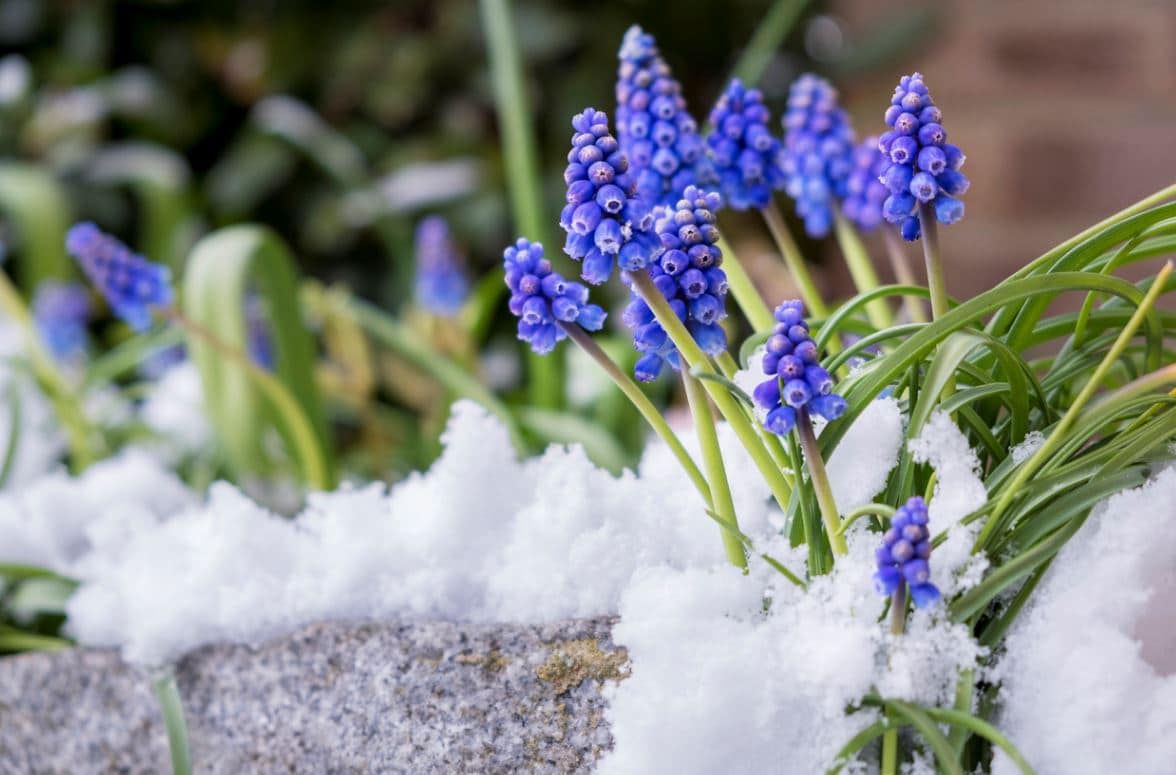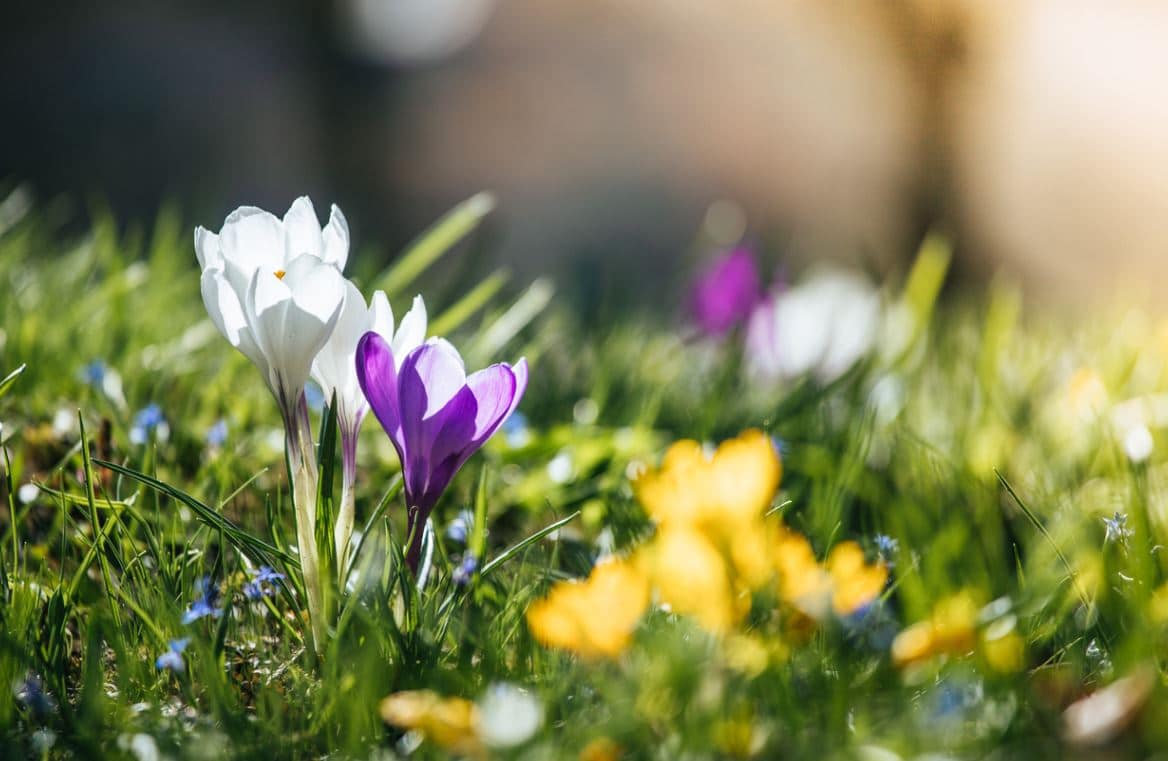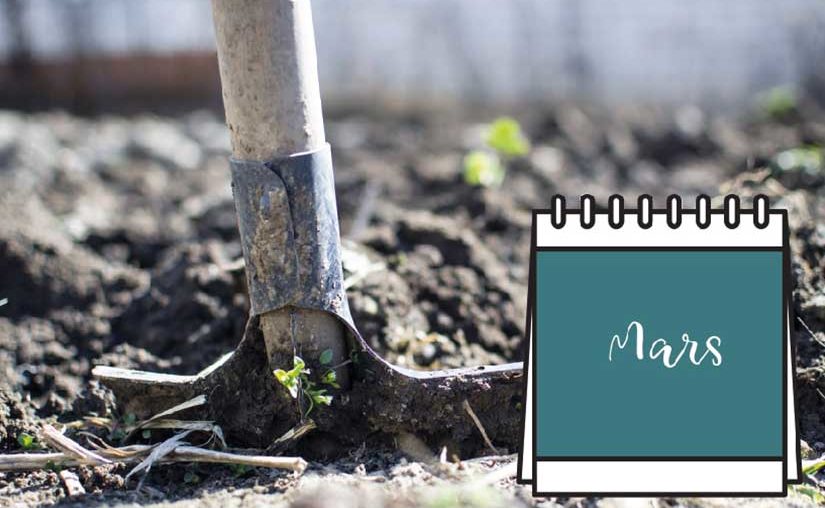Finally the first month of spring! The garden begins to come back to life after a long and dreary winter, But March is a month with capricious weather: the soft ray of sunshine of one day can be followed by a sudden frost.
A profusion of flowers should soon brighten up the garden. Spring-flowering bulbs bloom, and towards the end of the month, those loyal vernal shrubs that are forsythias will let out their dizzying explosion of yellow blossoms.
A few early-flowering cherry trees herald the spectacular picture of their coming blooming.
Later, the clocks move forward an hour and lengthen the day by the same amount, so you have no excuse not to take advantage of this saved time in the garden, because even at this time of the year you will find that there are not enough hours in the day for all the jobs you are planning.
Gardening: March in brief
- Mulch the bare soil of flowerbeds and flower beds.
- Transplant the evergreen shrubs.
- Prune shrub roses and shrub roses.
- Prune shrubs with colorful winter stems.
- Multiply the shrubs by layering.
- Increase your perennial stocks by taking cuttings from new shoots.
- Dig up and divide overcrowded clumps of perennials.
- Divide the primroses after flowering.
- Take cuttings from the tubers of dahlias.
- Plant the summer flowering bulbs.
- Sow sweet peas outdoors, or replant seedlings grown under cover. Pinch off the tips of young shoots to promote the appearance of side shoots.
- Sow hardy annuals in place.
- Reseed bare areas of grass.
- Start mowing the lawn regularly.
- Take out the pumps and reinstall them in the basins. Start feeding the fish.
- Sow the vegetables outdoors and harden the young plants to replant.
- Plant the early potatoes and asparagus.
- Protect the flowers of fruit trees from late frosts.
- Sow semi-hardy annuals and frost-prone bedding plants under cover.
- Water indoor plants regularly now that the weather warms up.
Last deadline:
- Finish planting bare root trees and shrubs and new fruit trees and bushes.
- This is the last limit for planting snowdrops and winter aconites.
Prepare for the future:
- Place the grow bags in the greenhouse to warm them up before planting.
- Place stakes and other supports on young plants before they actually need them.
The gardener’s weather forecast for March
March can be a very cold month, even though temperatures are rising. However, don’t be surprised by the severe frosts that hit in a clear night and make the soil so hard that frost plants can’t resist. Day after day, the temperature is directly dependent on cloud cover and winds.
Winds are often freezing in March, but they also help to dry out the soil after winter rains and snows. Coastal regions are more frequently subjected to the onslaught of the wind (an average of 11 days in Marignane, 12 in Brest) than mountain regions (1.6 in Bourg-Saint-Maurice) or plains (1.4 in Montluçon). All the coastal areas without exception are swept by the winds which, moreover, carry salt which damages the plants.
The increasing length of the days means better sunshine, even if as we know, the south of the country is a little more privileged! It will also be necessary to reckon with daily cloudy passages coming between the sun and us. On average, the North enjoys 120 hours of sunshine compared to 190 in the South.
Snowfall is rare this time of year, but the snowpack can still be thick in high mountains, which delays the arrival of spring. In March 946, there was 40 cm of snow in Paris. In the mountains, 10 days of snow in March is an average. We call these sudden rains in which snow and hail are mingled.

Start gently
If you’ve been sleeping in an armchair all winter, and suddenly you have an overwhelming urge to get out and tidy the garden with the onset of spring, start slowly. But far from us the idea of dissuading you. Gardening is good exercise, and there’s nothing better to get around than working in the garden on a clear, sunny day. Before tackling back-breaking jobs like digging, warm up with some flexibility exercises that will help you work out.
Moreover, tasks such as digging should only be done for short periods. A full day of repetitive motion can break your back. So start with half an hour of digging, then move on to an activity that doesn’t require you to bend over.
For example, start the craft of the month, an elegant obelisk. Adorned with flowering plants, it will bring a dimension of height to a flower bed. This type of decoration can be expensive to buy, but with just a small donation from a carpenter and a few tools, you can make one yourself, or even two. Have the wood cut to the right dimensions when you buy it: this will simplify your work, it will only be a kit to assemble.
Changing weather
The inconstancy of the weather is characteristic of February, one day with blue skies, the next wet with icy showers. Take advantage of better days to tackle tasks like preparing seedbeds for hardy annuals outdoors and vegetables, in soils you previously covered with plastic sheeting. Always remember that there can still be severe frosts.
So don’t give in to the temptation to buy transplanting plants that are starting to appear in garden centers, unless you have a greenhouse or a frost-free place to keep them until all risk has passed. And do not be in a hurry to remove the protections of the covered or wrapped frost plants for the winter. Plants can be uncovered during the day, but keep protective materials on hand if a night frost is forecast.
When to sow outdoors?
As a general rule, outdoor plantings of hardy vegetables and annuals can start; but in colder regions, it is better to wait until the end of the month or the beginning of April.
If the soil is heavy and clayey, it is also best to delay planting unless you have covered the soil for part of the winter. Remember that while books like this give general timing advice, you should always rely on local weather conditions when deciding whether to sow or replant outdoors.
If you have a small garden, this year try planting vegetables among the flowers. Most modern gardens are too small to accommodate a vegetable patch and pleasure garden, but fruits, vegetables, herbs, and ornamentals thrive harmoniously. Many vegetables have a certain charm and can create an interesting contrast to the ornamental in flower beds.
For example, the fine, feathery foliage of carrots stands out elegantly against the density of hostas leaves.
The rich foliage of beetroot or red cardoon perry provides a beautiful backdrop to the vivid colors of annuals and biennials. Artichokes and cardoons are architectural plants that stand out in any flower bed. It is a lot of fun to combine and mix the plants. The result will be as fun to watch as it is productive. Sow or plant the vegetables in groups rather than traditional rows, they will match perfectly.

Watch for weeds
Remember that many small jobs that contribute to the beautiful look of the garden can be done at a very leisurely pace. As you walk around, watch for the emergence of weed seedlings and dig them up with a hoe. Choose to do this on a warm, sunny day, then you will allow the weeds to dry out in the sun. Pull up perennials while they are still young, so it will be easier to control their spread.
But weeding can turn into a chore.
To avoid this, the solution is to mulch the flowerbeds and flower beds with a thick layer of organic matter, after cleaning them. This effective method of preventing weeds from growing is also perfect for conserving soil moisture and reducing the frequency of watering during periods of summer drought. Although it sometimes seems hard to believe, water is a commodity that is becoming scarce due to changing global weather patterns linked to global warming. We must do our utmost to save it.
The best time to apply mulch is early spring, when the soil is still wet.
Thus the evaporation of moisture from the surface of the soil will be slowed down. Start by watering if the weather has been dry. If the mulch is applied to dry soil, it will be difficult for water to penetrate the soil.
Prune the roses
This is the traditional season for pruning shrub roses and shrubs. Some prefer to prune them in the fall, but there is a case for spring. First, the more vegetation you leave in the garden over the winter, the more shelter you will provide for small animals.
Then, if your roses have suffered during the winter, then you can adjust your size to regain a beautiful shape after correcting the damage. Don’t be afraid to severely prune shrub roses. Modern varieties tend to be grafted onto the roots of much more vigorous species and have enormous growth potential.
They respond to the challenge of severe pruning by producing beautiful shoots and flowers.
Fight against pests
The presence of pests and diseases begins to be seriously felt, especially in the greenhouse, winter garden or home. Consider biological control, such as predatory bacteria or nematodes that kill specific pests. The gardening press regularly promotes them and you can order them by mail order. Most products are for use in the greenhouse, but there are some that you can incorporate into watering for slug control. The sooner you master the problem of slugs and snails, the better: They are also hungry for the tender greenery that emerges from the ground.
Read also :







